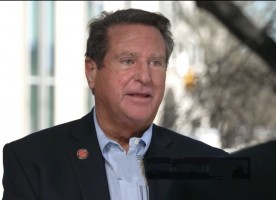Restorative justice in education aims to resolve conflicts and address misbehavior through dialogue and accountability rather than relying solely on punitive measures such as suspensions or expulsions. While it has gained significant traction as an alternative to traditional discipline, its implementation falls short of expectations for several key reasons.
A significant challenge is the insufficient training provided to teachers and administrators involved in restorative practices. Many are introduced to these methods without adequate preparation, leading to ineffective application. Many educators also do not buy into the concept.
Restorative practices involve more than just gathering in a circle to discuss issues; they require skills in mediation, emotional regulation, and a thorough understanding of trauma. Without proper training, the approach can become superficial or chaotic, ultimately diminishing its effectiveness.
A cohesive strategy for integrating restorative justice into educational settings enhances its transformative potential. While many schools acknowledge its benefits, they often struggle to establish a clear framework for implementation.
By uniting the entire staff around a commitment to restorative practices instead of traditional disciplinary measures, schools can cultivate an environment of trust and understanding. This clarity will help students understand behavioral expectations, and teachers will feel more secure in their roles, collectively contributing to a supportive learning atmosphere. However, achieving this goal can be challenging and time-consuming.
Most schools and districts face stretched resources and limited time. Implementing restorative justice often requires time-intensive interventions, such as one-on-one discussions or group sessions, to resolve conflicts. In underfunded schools with overworked staff, this can pose a significant hurdle. Consequently, quicker punitive measures, like detention, tend to be preferred, even if they are less effective in the long run.
Restorative practices also struggle with severe or repeated offenses. While effective for minor issues—such as classroom disagreements-the "let's talk it out" approach may fall short in cases involving violence or ongoing disruptions. Victims often feel unsafe, and offenders are frequently not administered practical consequences, leading to re-offenses.
The acceptance of restorative practices is currently tenuous. Many parents, students, and even some educators still equate punishment with justice, viewing disciplinary actions like suspension as necessary responses to misconduct. For example, if a student bullies another and receives only a "restorative chat" instead of a suspension, it may be perceived as overly lenient, especially if the bullying continues.
This perception can create considerable tension within the school community. Without a widespread commitment to and understanding of the restorative process among all stakeholders—parents, educators, and students—the initiative is likely to struggle and fail to make a meaningful impact. A shift in mindset is vital for effectively adopting restorative practices that prioritize accountability and healing over mere punitive satisfaction.
An analysis by the Rand Corporation of restorative practices in Pittsburgh schools revealed a significant decline in suspension rates, suggesting that these methods can foster student accountability and reduce disciplinary actions. However, despite this positive trend, academic outcomes did not improve significantly, raising questions about the overall effectiveness of the approach.
Teachers also expressed concerns about feeling unprepared to manage their classrooms effectively under this new framework. This feedback suggests that while the concept of restorative practices is valid, the execution and support surrounding these initiatives often lack substance. Max Eden wrote: “When it comes to studies of ideologically preferred policies like restorative justice, the logic all too often is: ‘Heads, I win. Tails, I would have won if it were implemented correctly.’”
For restorative practices to succeed, schools need adequate funding for resources, comprehensive training programs that equip all educators with essential skills, and a strong commitment from all stakeholders. Without these critical elements, restorative practices risk becoming a well-meaning initiative that struggles to withstand the realities of modern educational settings, even when implemented correctly.
##
JC Bowman is the executive director of Professional Educators of Tennessee.











